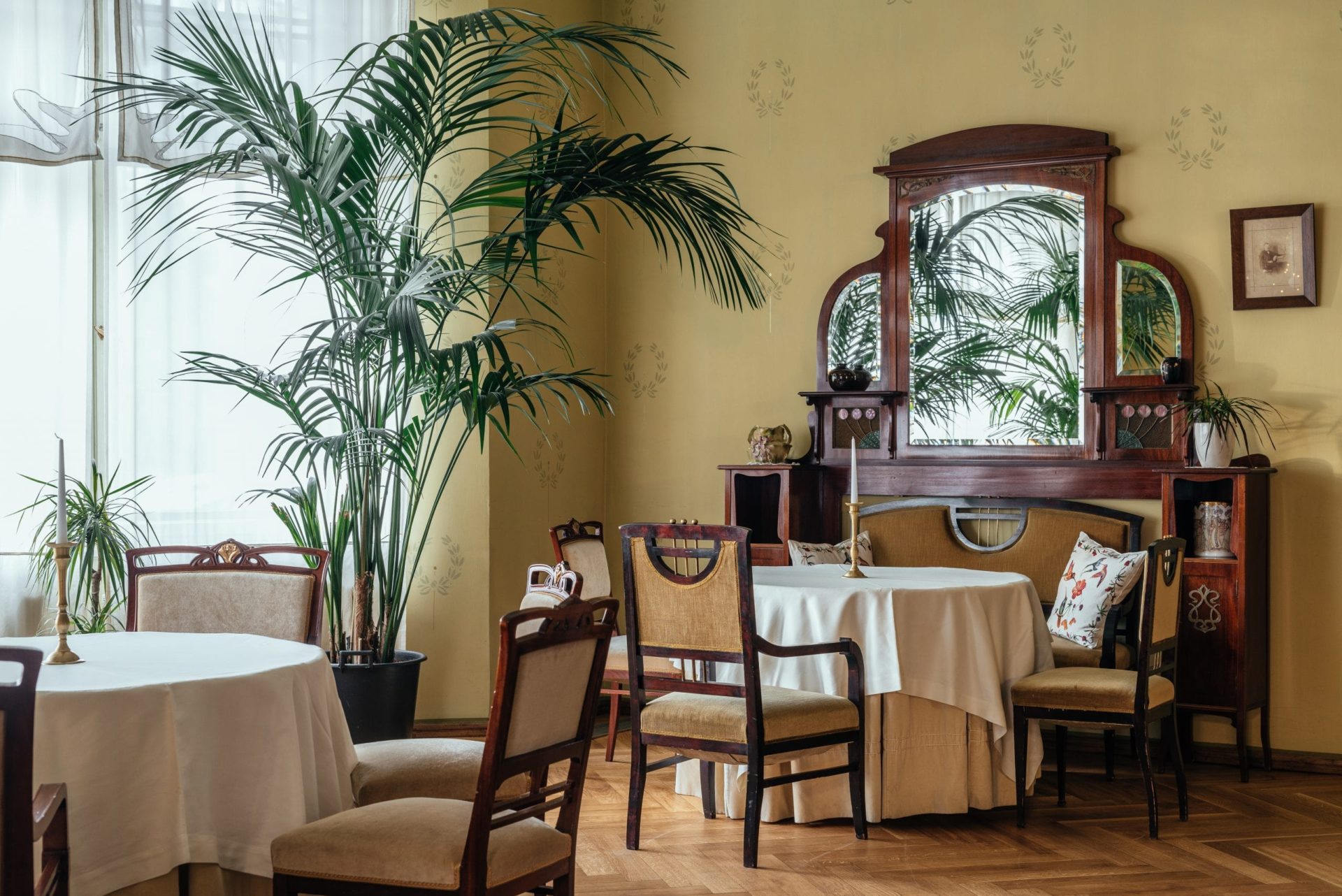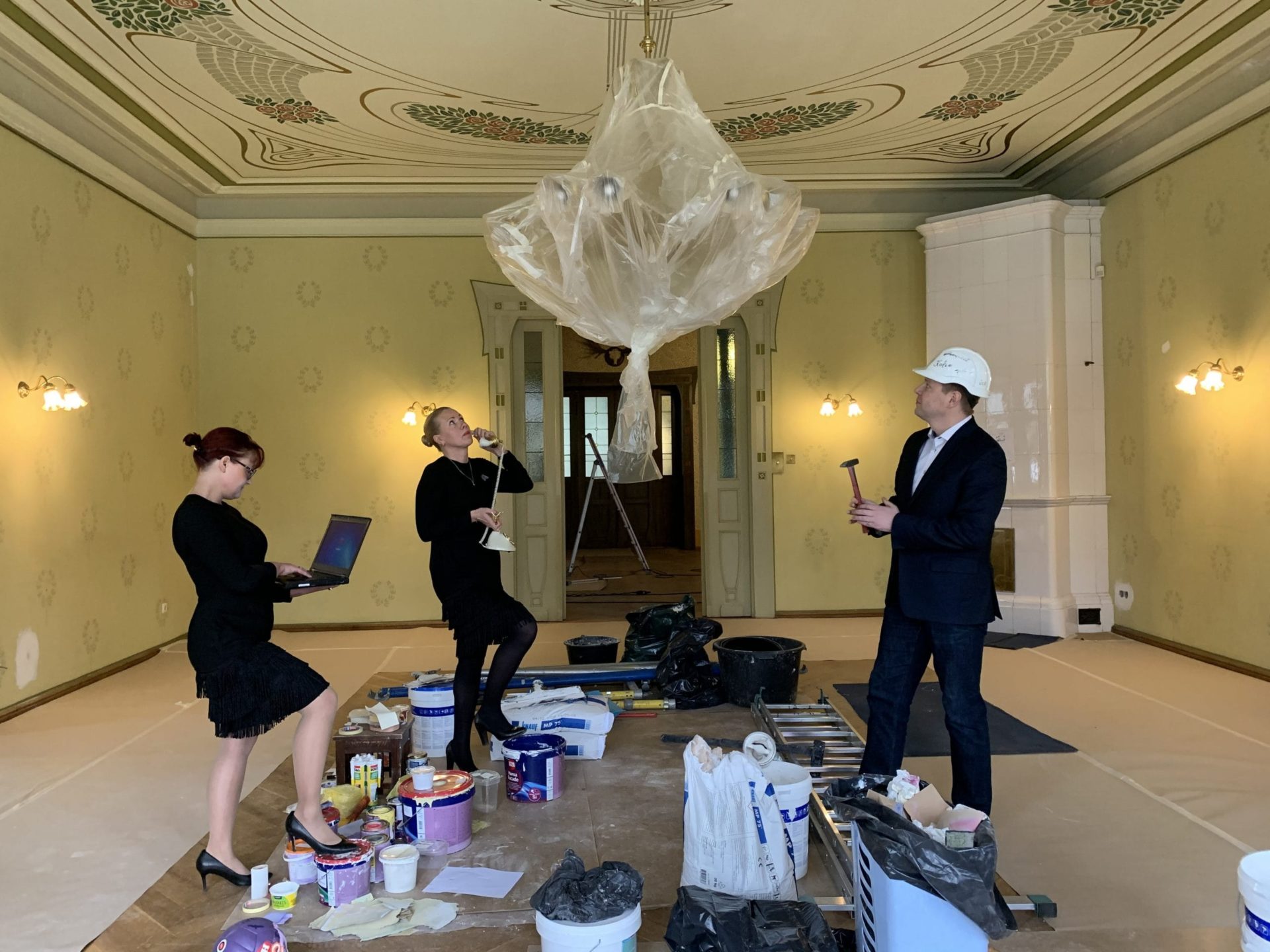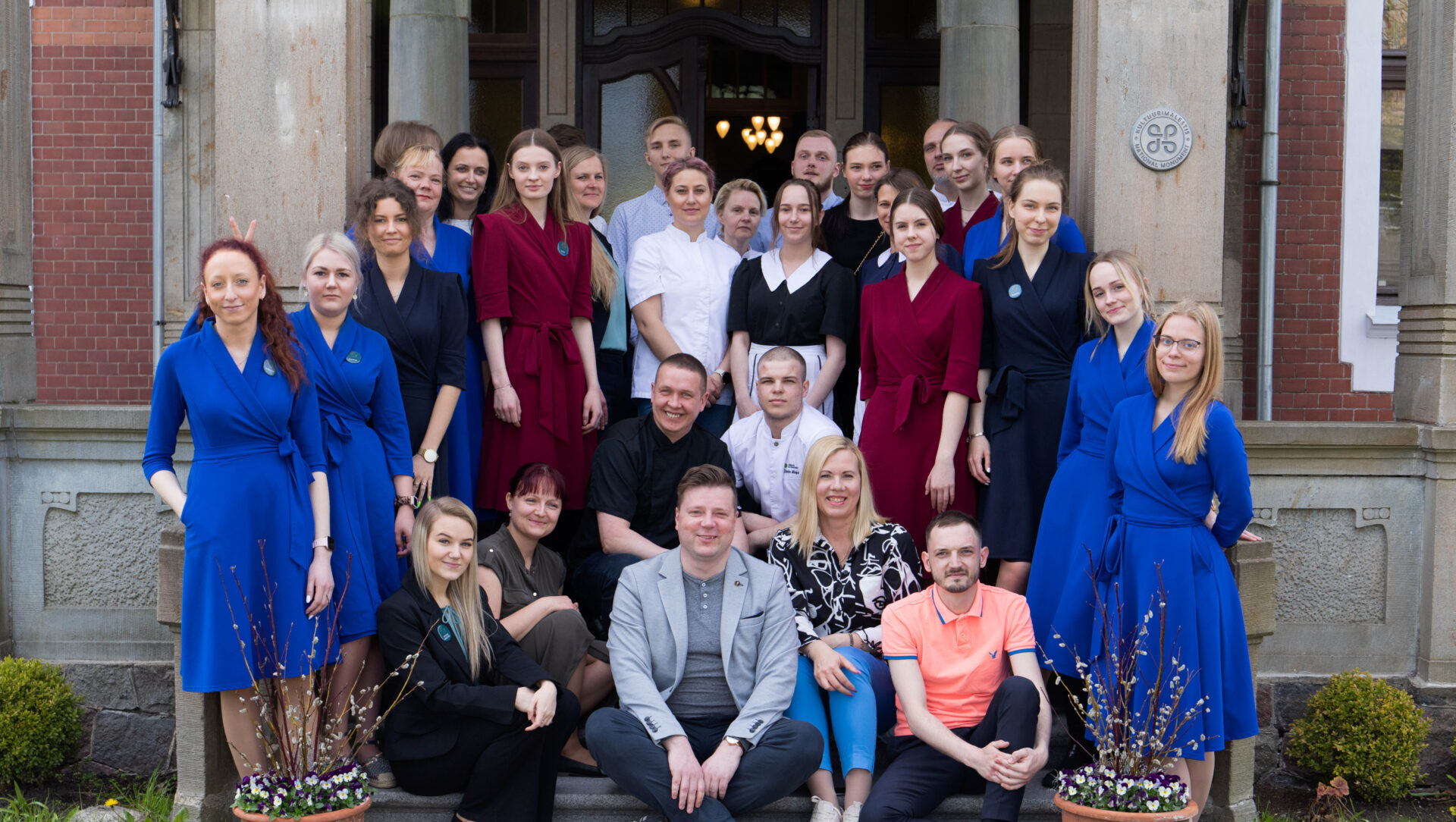Villa Ammende's colourful history reaches back 115 years. The villa got its name from the Ammende family who built it following the latest fashion trends of the time, and inhabited it for nearly a quarter of the century until they had to sell it to the city of Pärnu because of debts.

Hermann Leopold Ammende
The Balto-Germanic magnate merchant and the builder of our beautiful Villa Ammende who inherited Pärnu’s first department store from his grandfather in the beginning of the 20th century and together with that, the status of the wealthiest businessman of Pärnu. Mr Ammende was also influential on the political arena and played an active part in Estonian life both in the Parliament and in the City Council of Pärnu.
-
Martha Ammende
The wife of Hermann Leopold and the mother of the Ammende family’s six children. Her first child was daughter Ellen who was followed by 5 sons.
-
Ellen Ammende
The most loved and the only daughter of Hermann Leopold Ammende who later changed her last name to Dworzetzky-Bogdanowitch.
-
Evald Ammende
The most famous of Hermann Leopold Ammende’s sons. A well-known politician who was passionate about standing for the rights of minorities.

1904
The history of Villa Ammende goes back to the age of economic growth of the turn of the century. The haute bourgeoisie who had up to that point lived in luxurious apartments started to change their preference more and more towards private houses with large plots of land. Hermann Leopold Ammende, one of Pärnu’s wealthiest magnate merchants whose ancestors had arrived in Estonia from Germany in the 18th century, was looking for a suitable house for the wedding of his only and dearly beloved daughter Ellen who had fallen in love with a ship captain. Not being able to find a suitable place, Hermann Leopold decided to build a villa himself; a villa that would be perfect for his daughter’s wedding and also serve as a summer house in days to come. He ordered the project for the luxurious building from an architecture bureau Mieritz & Gerassimov in St. Petersburg. (An interesting fact: Mieritz, the architect who took on the project was not of Russian descent but actually a Finnish architect who had extended his activities to St. Petersburg.)
Back in the day, the Balto-Germanic crowd was known for their conservative taste. Their economic situation was not one to be praised, meaning that most of them could never implement drastically new designs in their homes. Locally created modernism mixed with traditionalism was preferred, together with the restrained and heavy, so called severnoi modernism. The emerging national bourgeoisie preferred Finnish architects. The flashy Belgian and Austrain modernism found little use in Estonia. Villa Ammende represents the latter. A building whose ambitious design would perfectly fit into any villa district in St. Petersburg or Riga feels quite surprising in the provincial town of Pärnu.
The project for the art nouveau building was finished fast and got approved by the City Architect of Pärnu on May 5th, 1904. The building work started immediately.

1905
The building shot up with incredible speed – it was almost ready by August, the landscaping and the fence being the only things lacking. The final execution was a lot richer than the original plan, with all the fashion trends and innovative solutions of the day being represented in the project.
The facades of the building used new techniques and materials which in turn were highlighted with fashionable colours of the time: multicoloured ceramic plates, forged black iron and grooved blue-grey iron, olive green wood, light blue plaster and strip stone details. Despite the lavish abundance, the end result was elegant. The legend says that the special tower of the building was built for Ellen to see when her husband was returning from his sea voyages.

Art nouveau paintings on walls and ceilings, robusts wood cuts on the threshold strips, majestic chandeliers, plaster decor and stately glazed ovens made by the Zelm and Böhm factory in Riga. The playful style and innovative building materials must have matched magnate merchant Ammende’s slightly nouveau riche taste. The house opened its doors for the reception and for extravagant parties.

1927
According to the potters, the stoves of the house were only in use for the first five-six years since the villa became a summer house after that. The family’s financial situation took a hit with the first world war and the Russian Revolution. It all went downwards from there until they finally had to declare bankruptcy and sell the villa. The owners were just about to sign the sales and purchase agreement with a merchant from Tallinn when the City of Pärnu intervened. Since the land belonged to the city, the local authority used their pre-emptive right. The reason is also stated in the decision of the City Council of Pärnu as follows: “For the improvement of the resort”. The city purchased the villa for 8 million marks in 1927. The original plan was to use the house as a Kurhaus and as a beach hotel.
Incidentally, the city remained in debt for the house. Part of the purchase sum remained unpaid to the Ammendes still in 1940. The latter had already moved to Germany in 1938, after having signed a statement agreeing not to have any claims against the Government of Estonia.

1929
The city presented Olev Siinmaa, the city architect of Pärnu with a task to rid the villa of art nouveau style which had been under high dislike during the Republic of Estonia as an example of bad taste. The plans for the reconstruction were finished by 1929. Due to the lack of funds, the introduction of classicism did not get far. Only the walls between the green hall and the salong for ladies and gentlemen were pulled down and replaced by pillars. The frolicsome embellishments of art nouveau were removed from doors, cornices and fireplaces. The majority of the fancy ovens on the ground floor were also demolished. Art nouveau as a style suffered from such a strong dislike that the broken glazed tiles were favoured over brass embellishments that were removed from the grey fireplace.
The Villa Ammende of today looks like she did when her doors were opened in the beginning of the 20th century.

1935
Villa Ammende was rented out to a family who ran a casino on the ground floor and lived on the first. The house became the place for the Estonian social elite to gather, with the first president of the first Republic of Estonia, Konstantin Päts being among the frequent visitors. In 1940 the house went into the hands of the Russian military authorities. During the German occupation, the villa held a casino for the officers.

1944
During the Soviet times the villa belonged to the governmental authorities in charge of resorts. People went there to watch movies, attend dance nights, use the library and also the treatment rooms, since one of the rooms on the villa’s ground floor was taken over by sanatorium “Friendship”. At the end of the 1970s, there was a plan to replace the sanatorium with a Wedding Palace. When the Soviet Union collapsed and the large influx of vacationers stopped at the end of the 1980s, the house was left empty.

1991
After the collapse of the Soviet Union the villa was left to deteriorate. Every now and then, Pärnu Opera gave concerts here on the moonlit nights where people enjoyed Schönberg and the general decadence. The heritage protectors were waiting with bated breath whether someone would get to it before it became completely derelict. Luckily, someone did.

1995
Two Estonian businessmen, Rein Kilk and Hans H. Luik made a decision to renovate the beautiful villa and to open it up to everyone. Since the wartime reconstruction works were mostly limited to removing everything reminiscent of art nouveau from the interior, the outer facades had luckily remained intact. With the added research from different time periods and photos obtained from Germany, the renovators had plenty of input to restore the villa to its return of the century ambience.
The concept behind the restoration project was the following: to create an atmosphere of a rich merchant’s family house. The renovation works started in 1997. At first it was not clear what function the house would have. Estonian art nouveau museum was one of the ideas.

1999
The freshly renovated exclusive hotel and restaurant with period interiors and furnishings were ceremoniously opened in the beautiful park garden within the Pärnu beach district in September. The renovators were called crazy in the best sense of the word since they left no stone unturned when restoring the villa as elaborately as possible: the interior was restored to the exact state it had been when the villa had been built 110 years ago. The floors were restored by partially using old materials and details, with strict attention being paid to the old examples when making the parts that were missing. Old window frames and doors were restored, and old stoves and fireplaces restacked. The paintings were restored with chalk paints. The heritage protectors approved of the work done. That does not happen often.

2020
By 2020, Villa Ammende has been welcoming guests for over 20 years. The villa had also undergone smaller refurbishment projects in the past but now it became clear that the time was ready for a full renovation. We wished our guests to have access to all modern amenities without the villa losing its true face and character. We searched for a balance between the present and the past. And we do feel like we found it. But you have to come and visit us to see it yourself!





